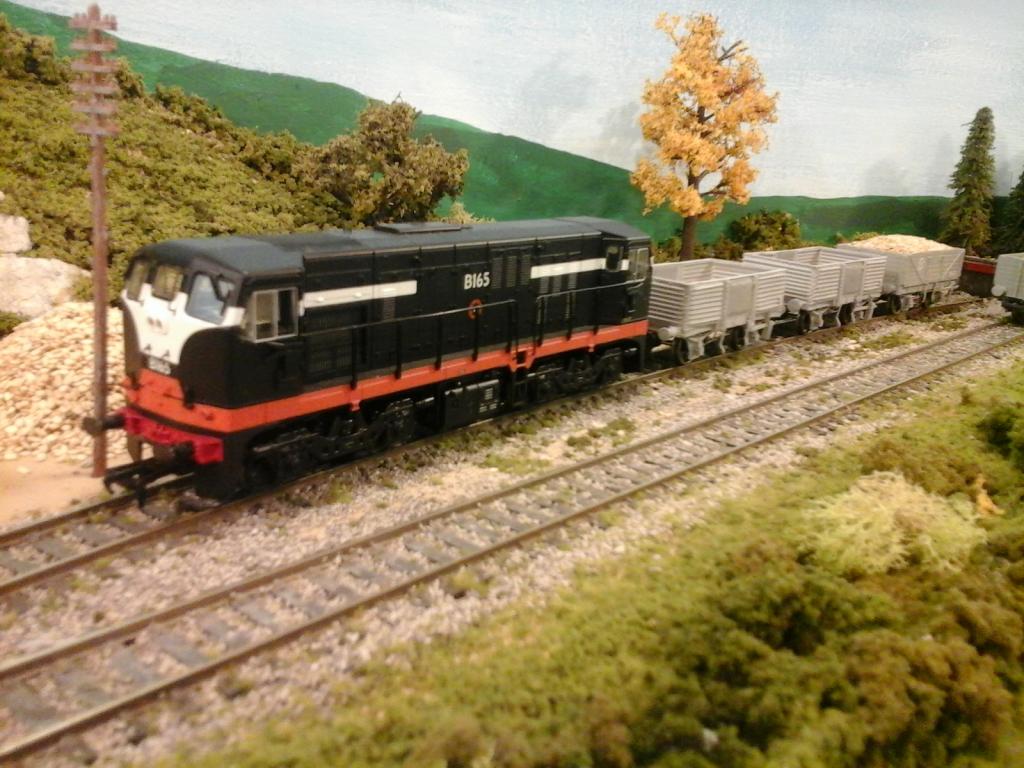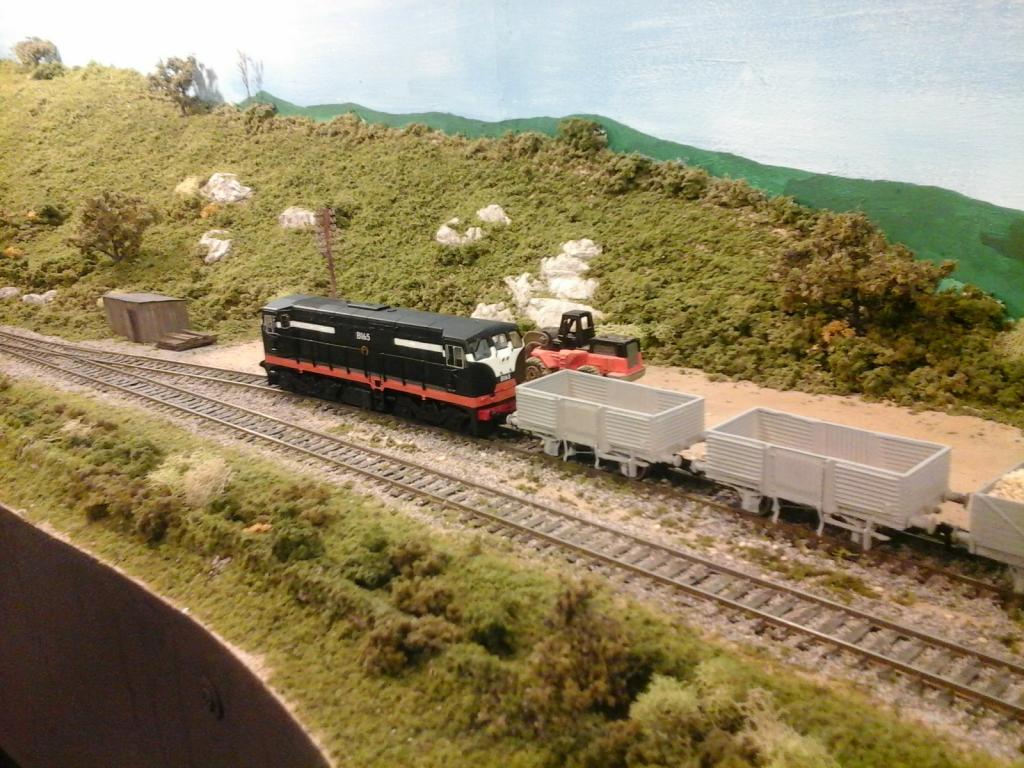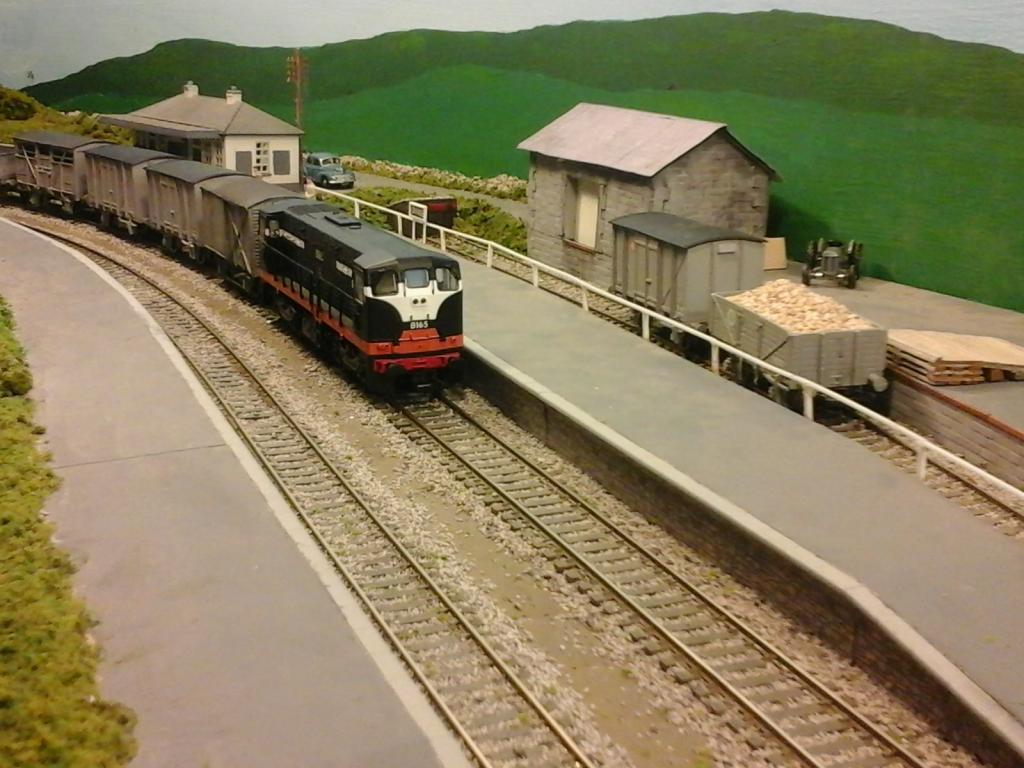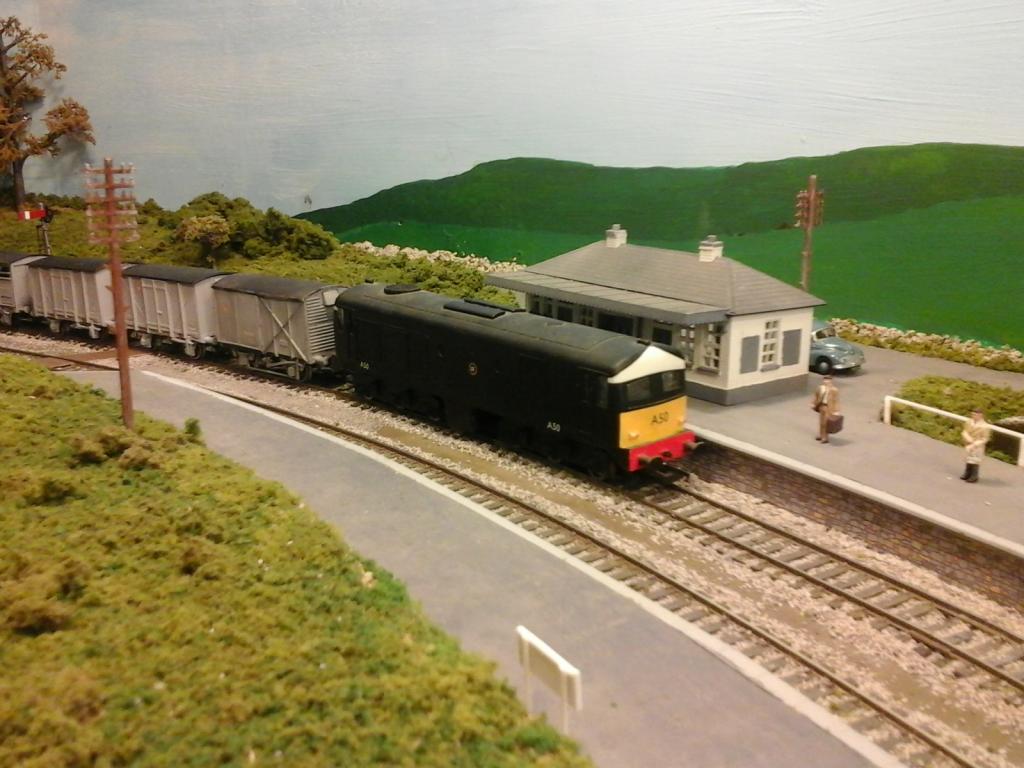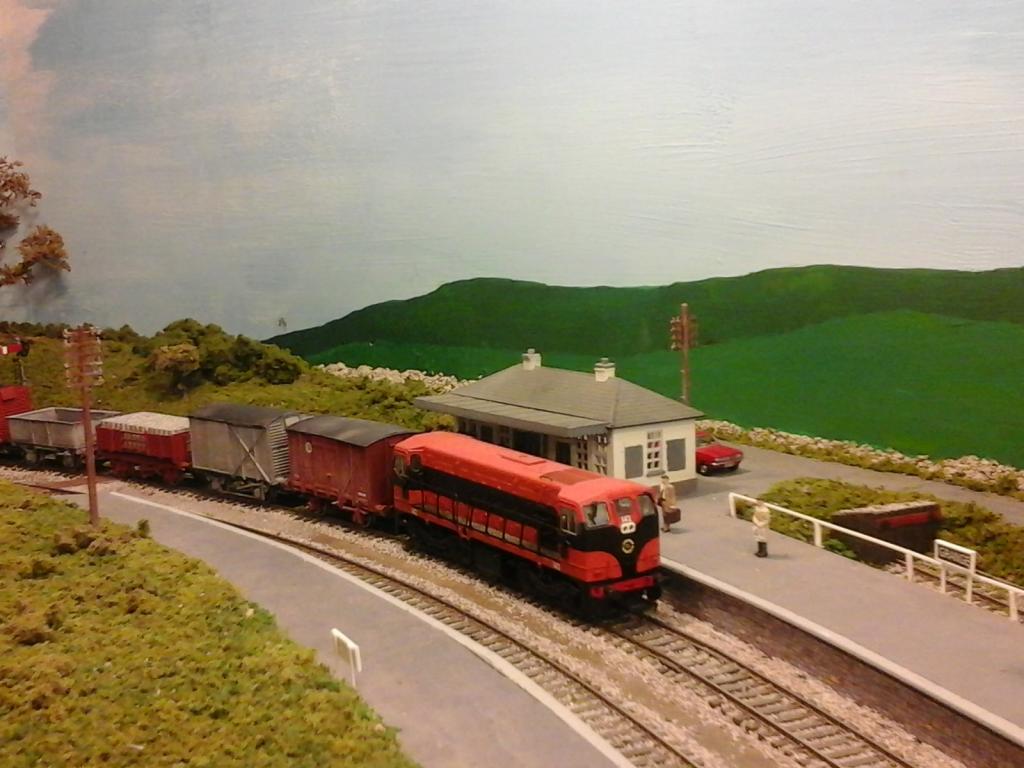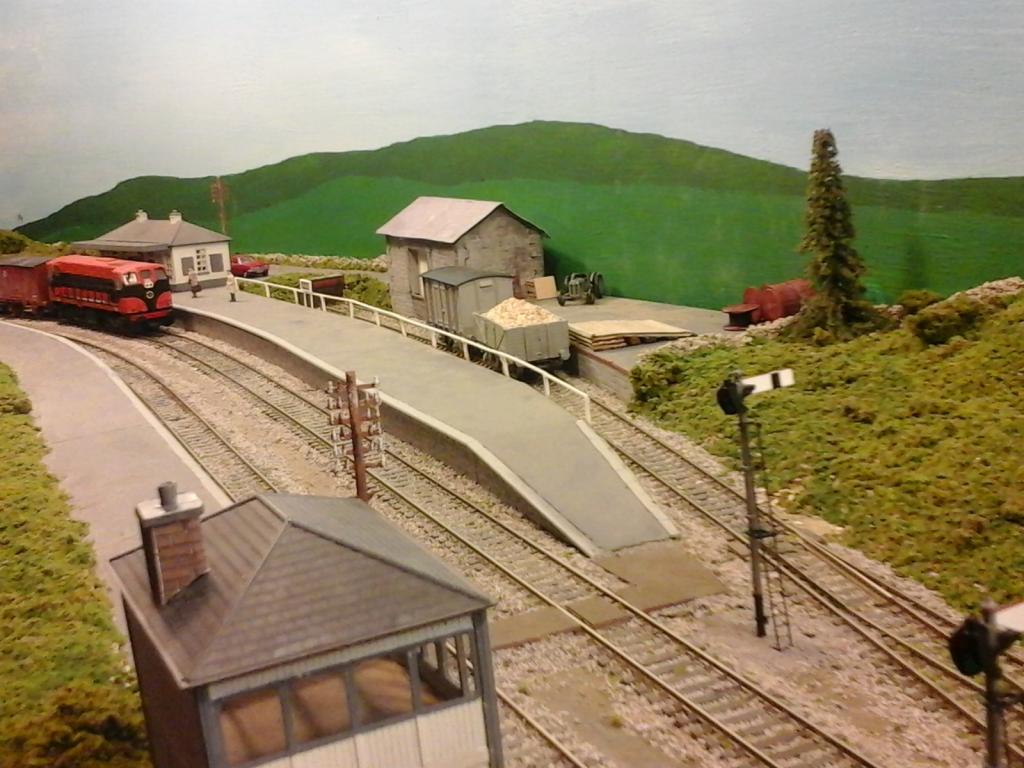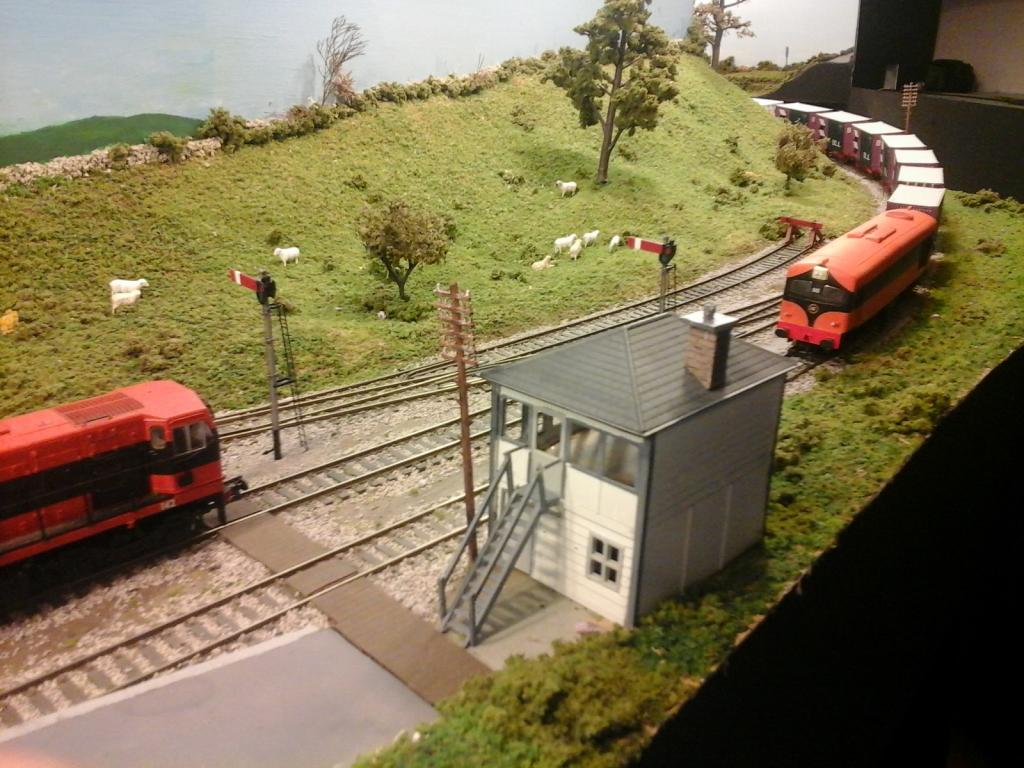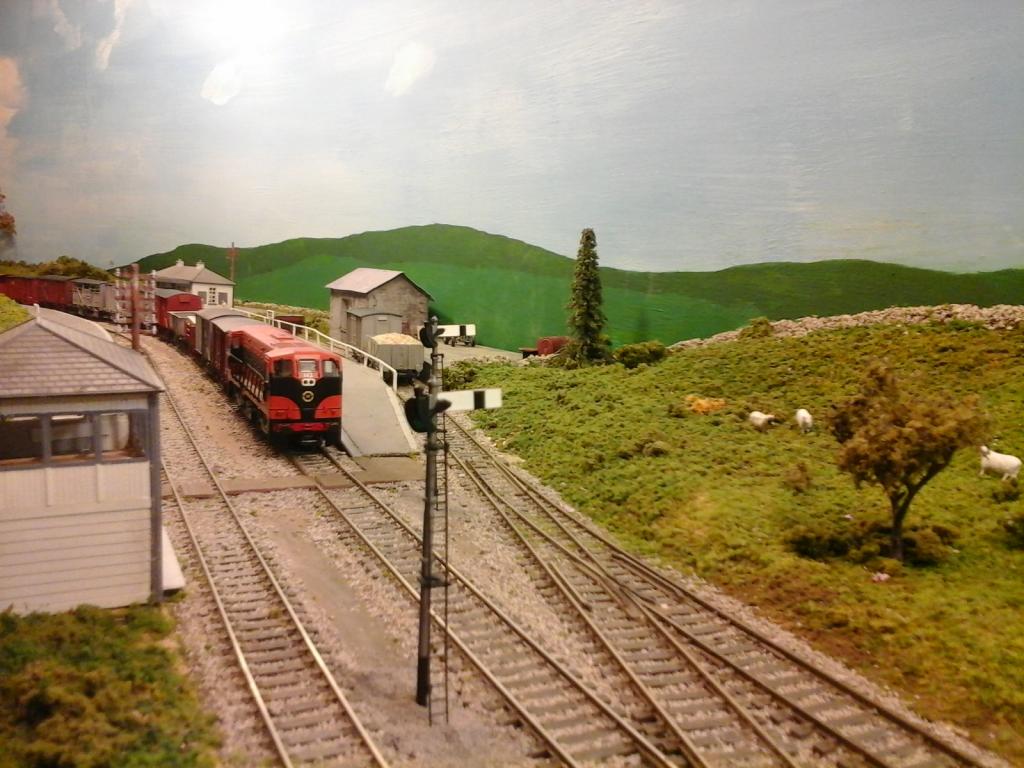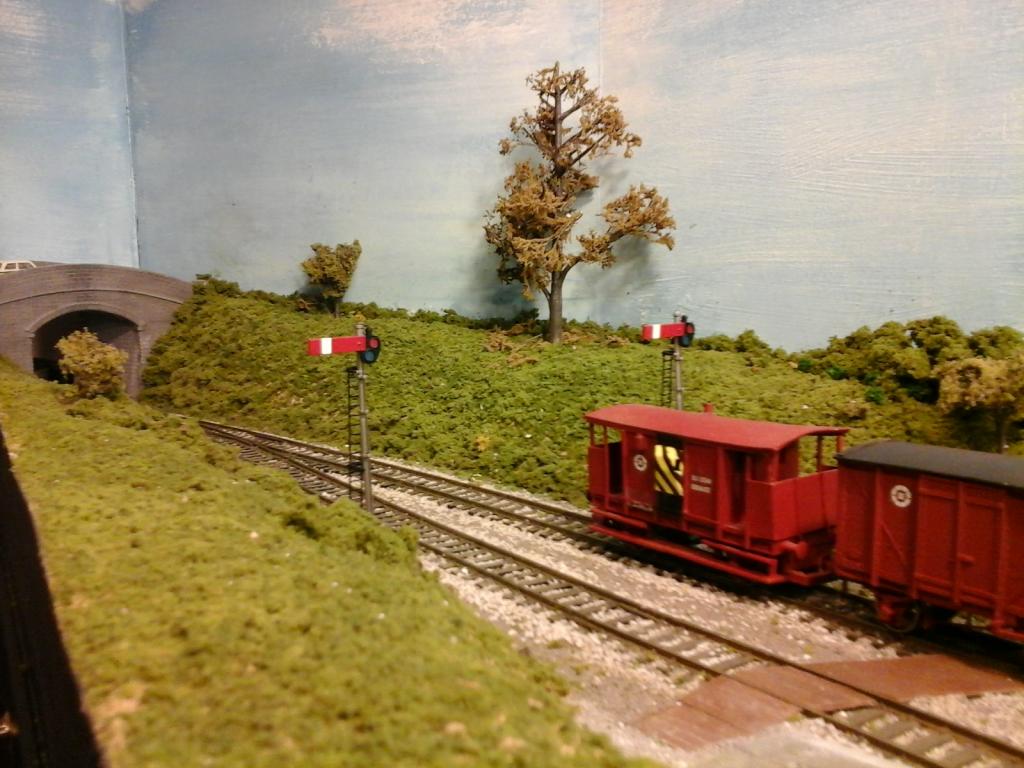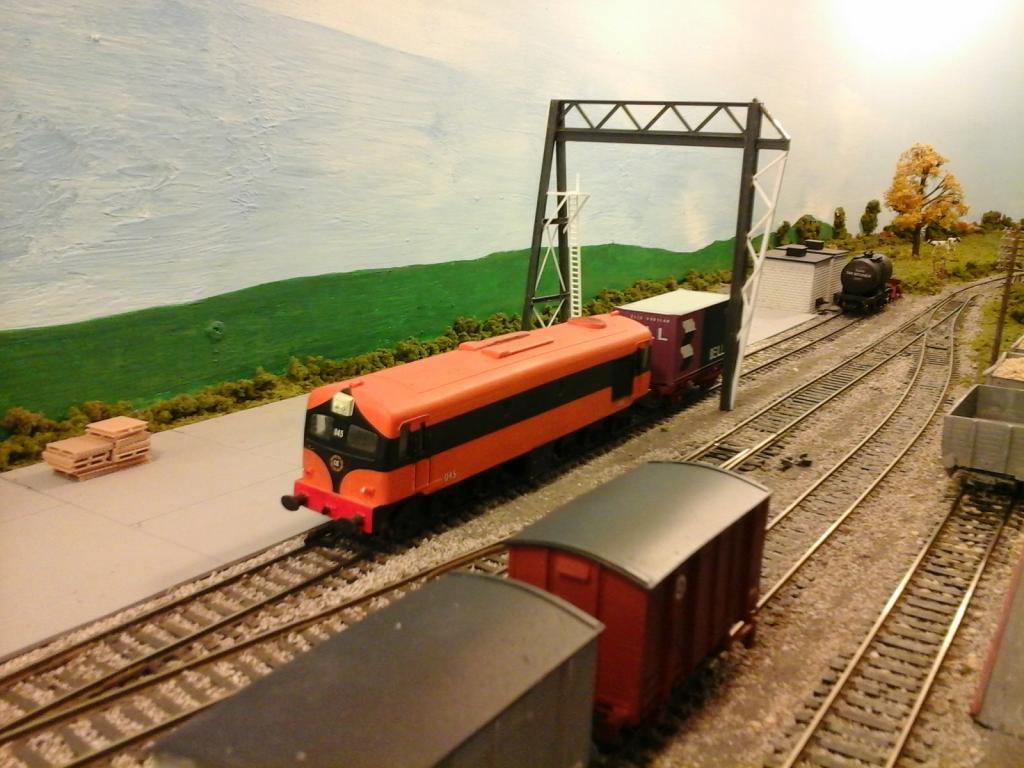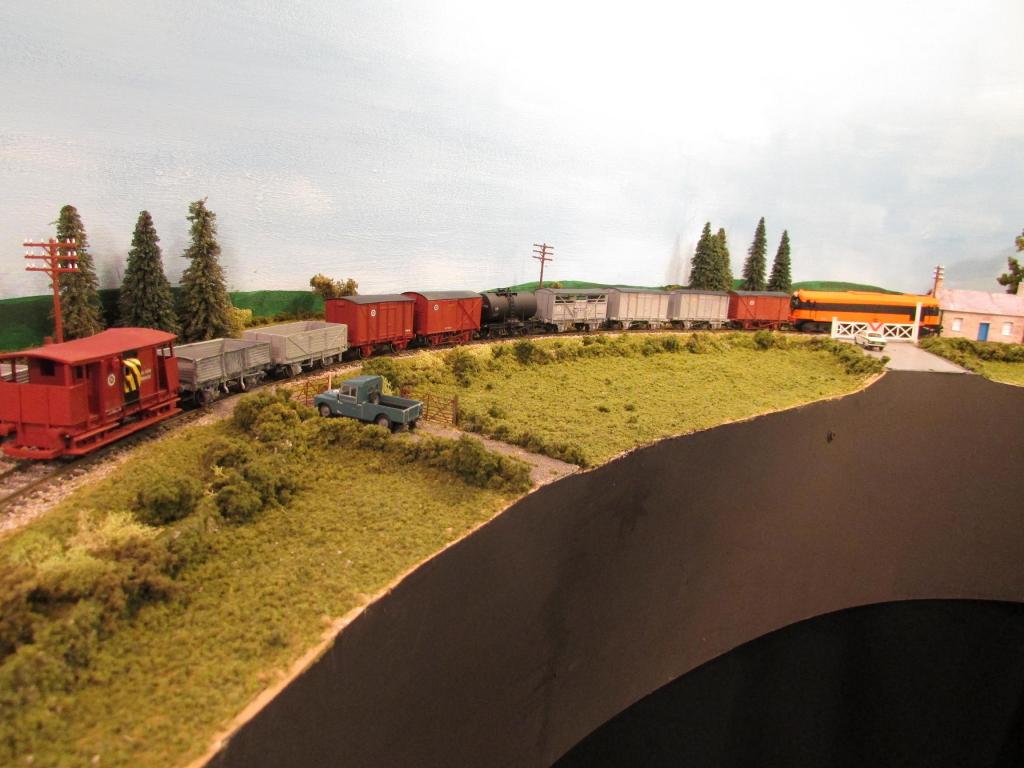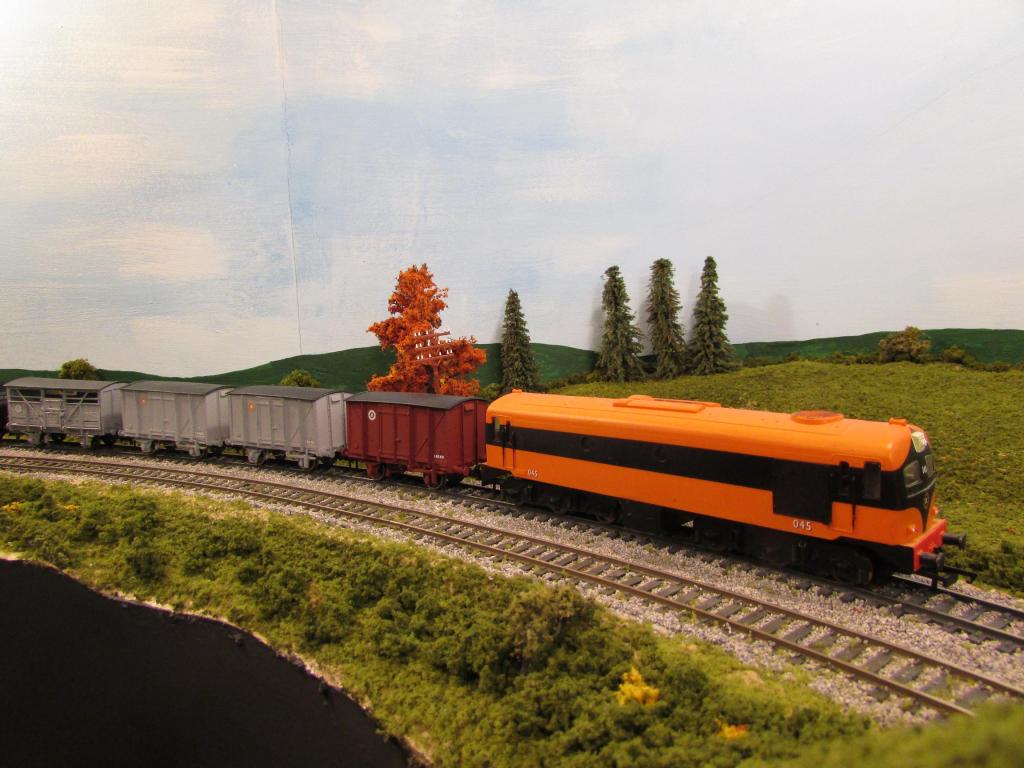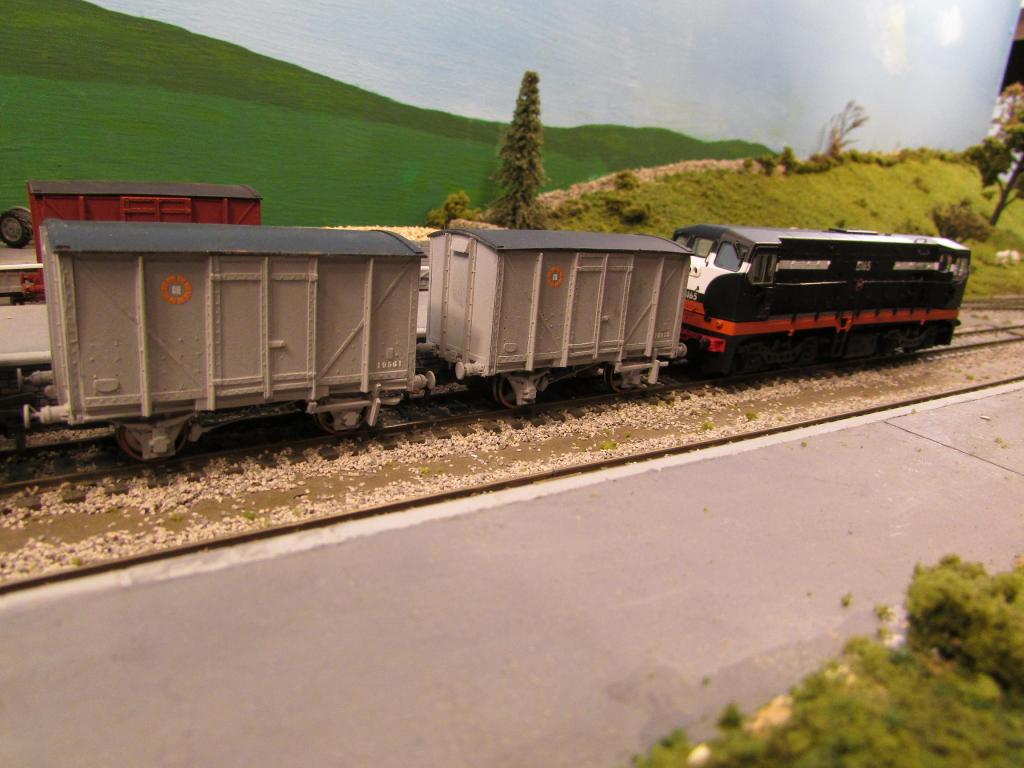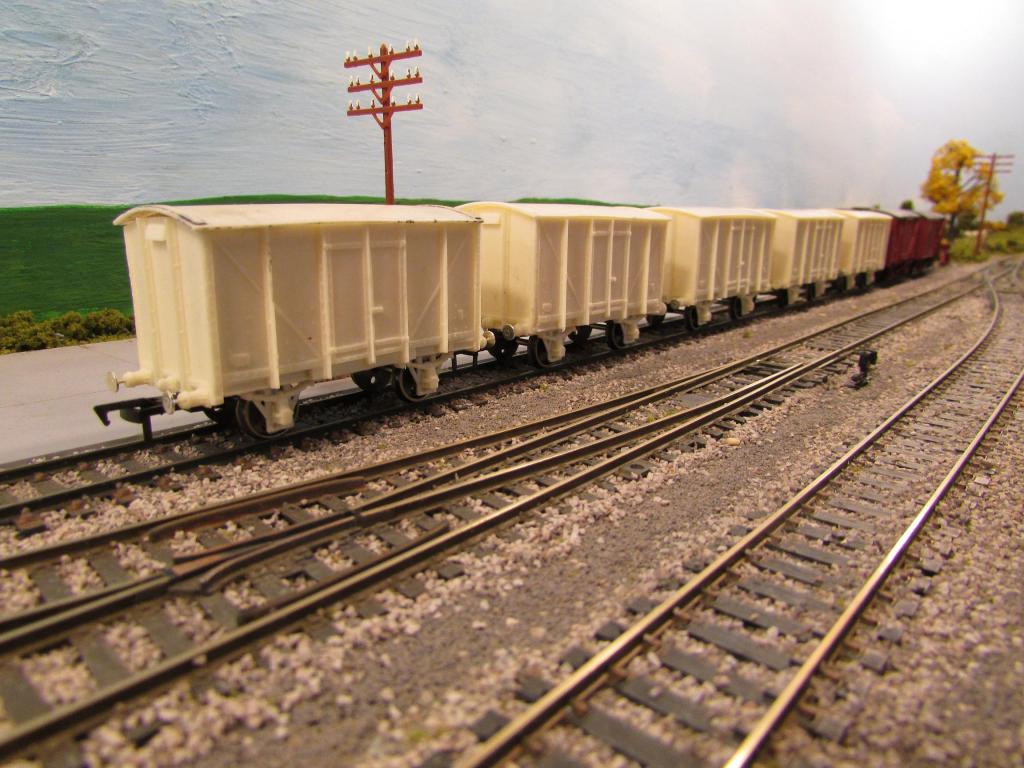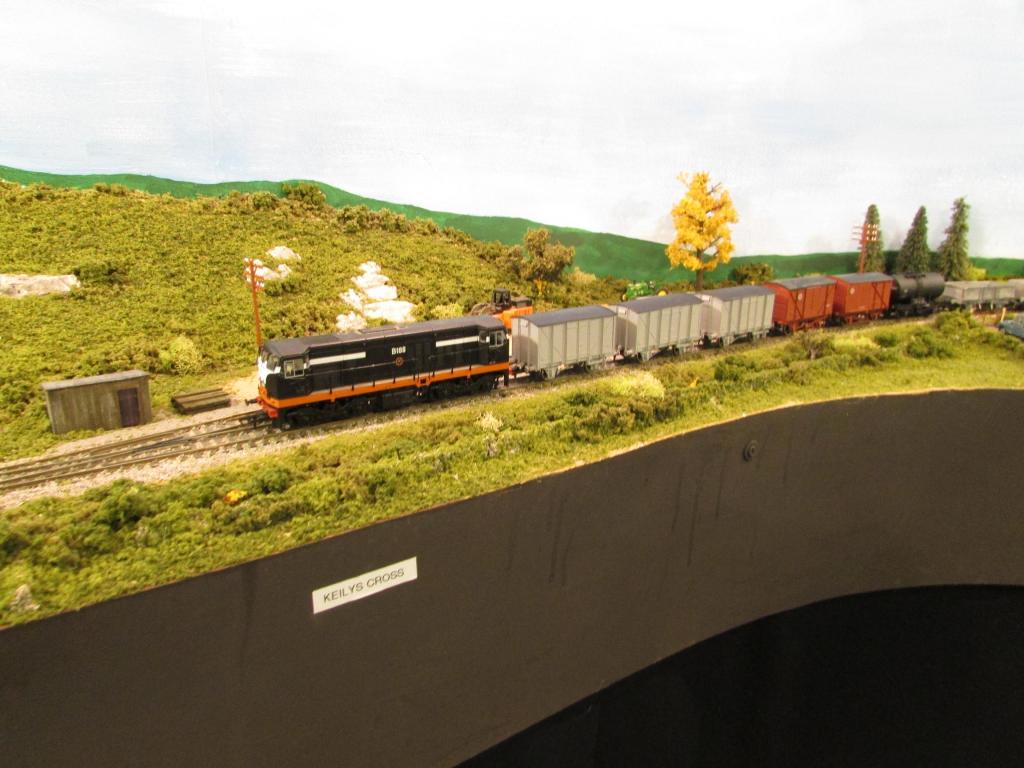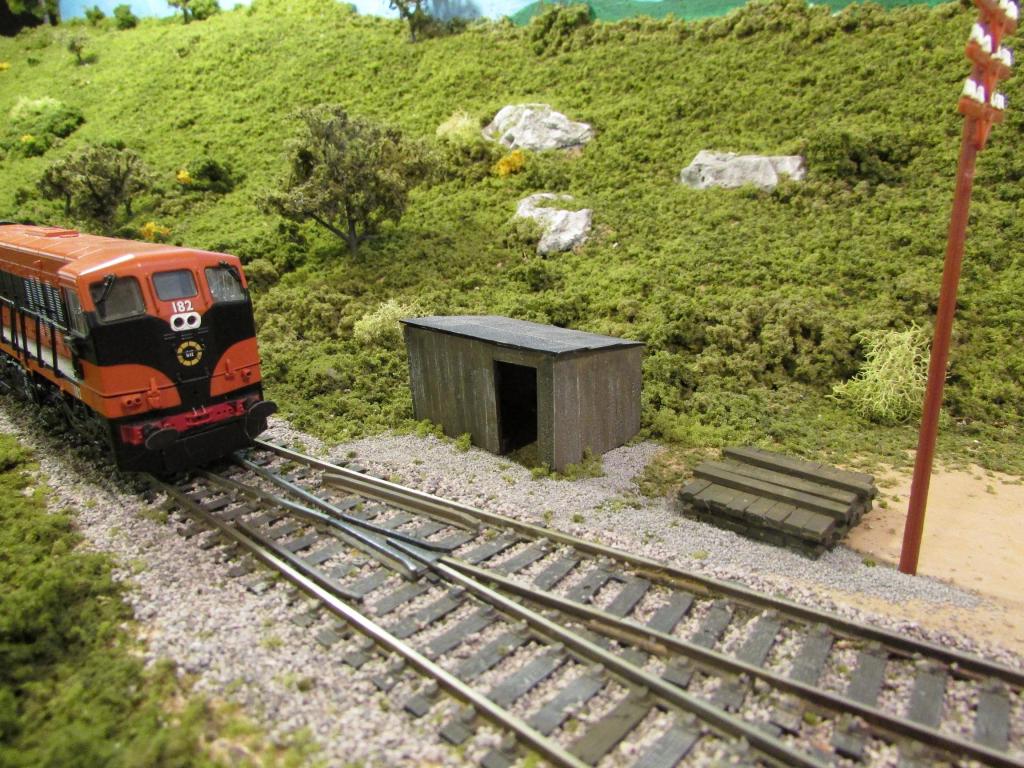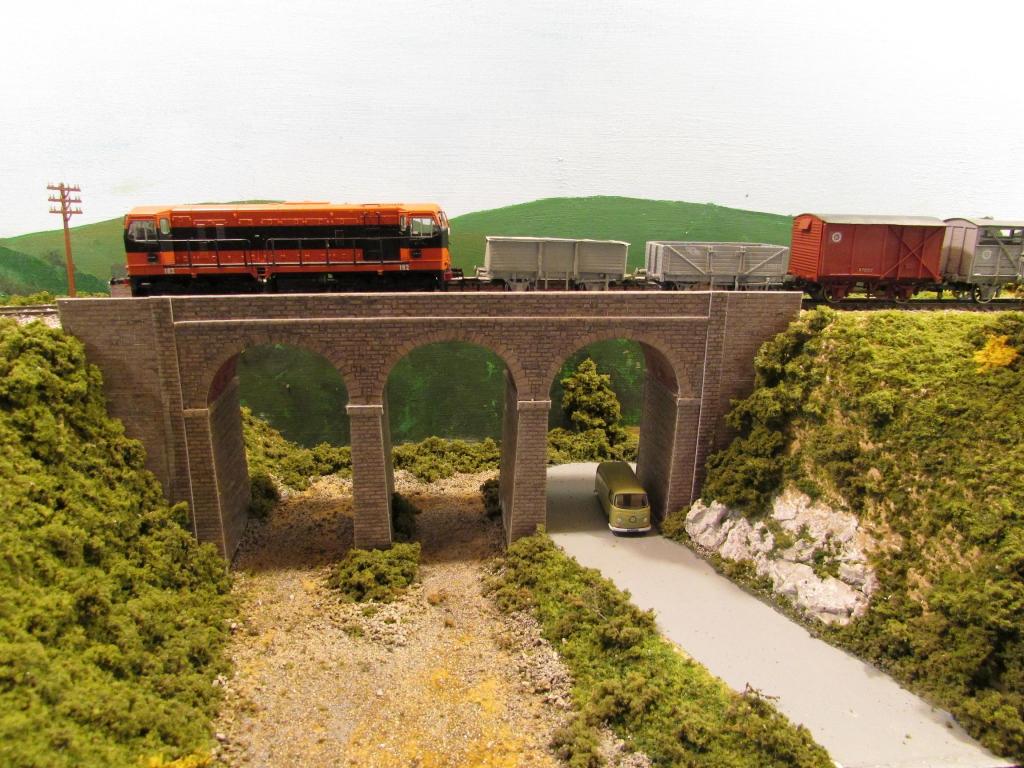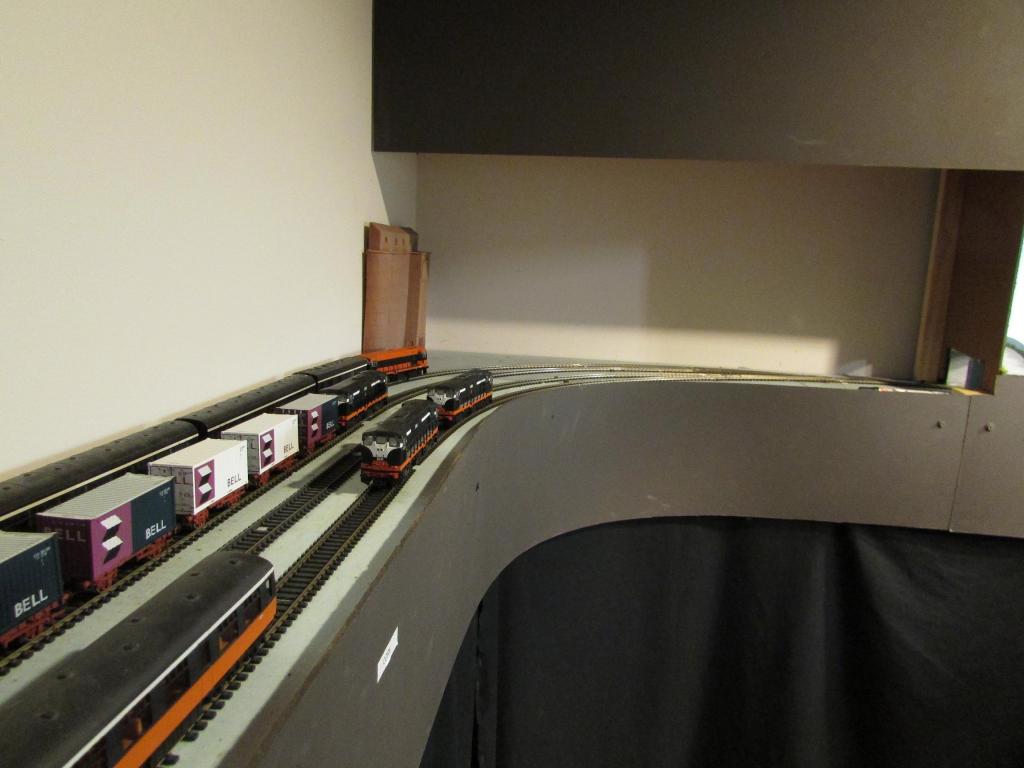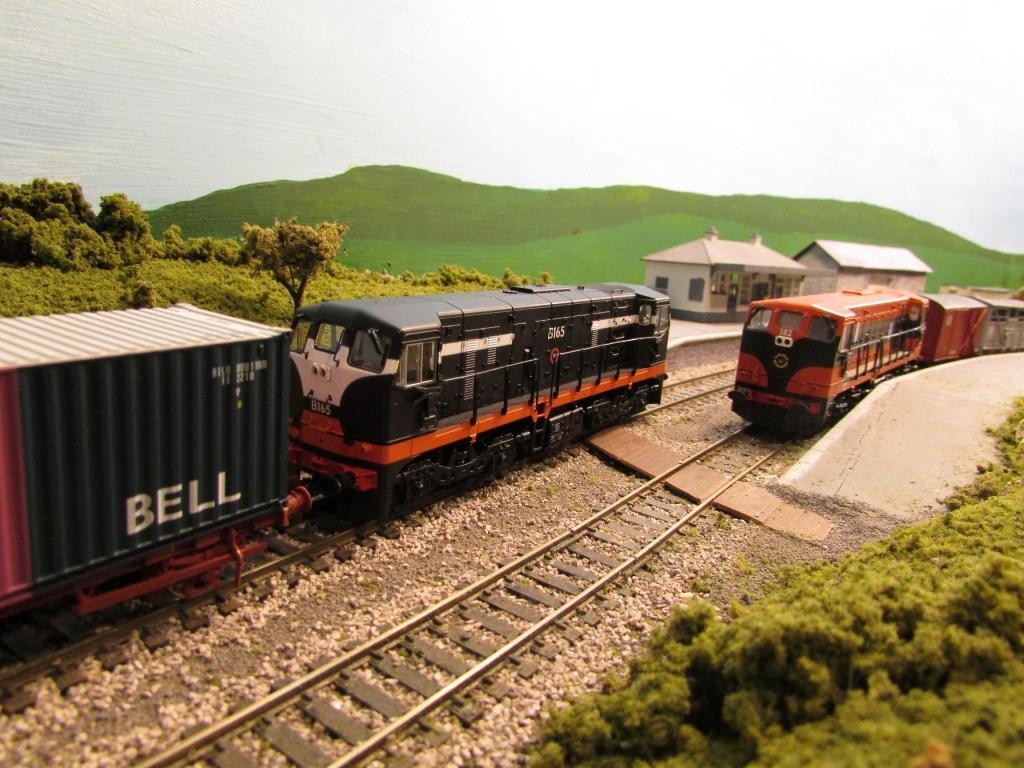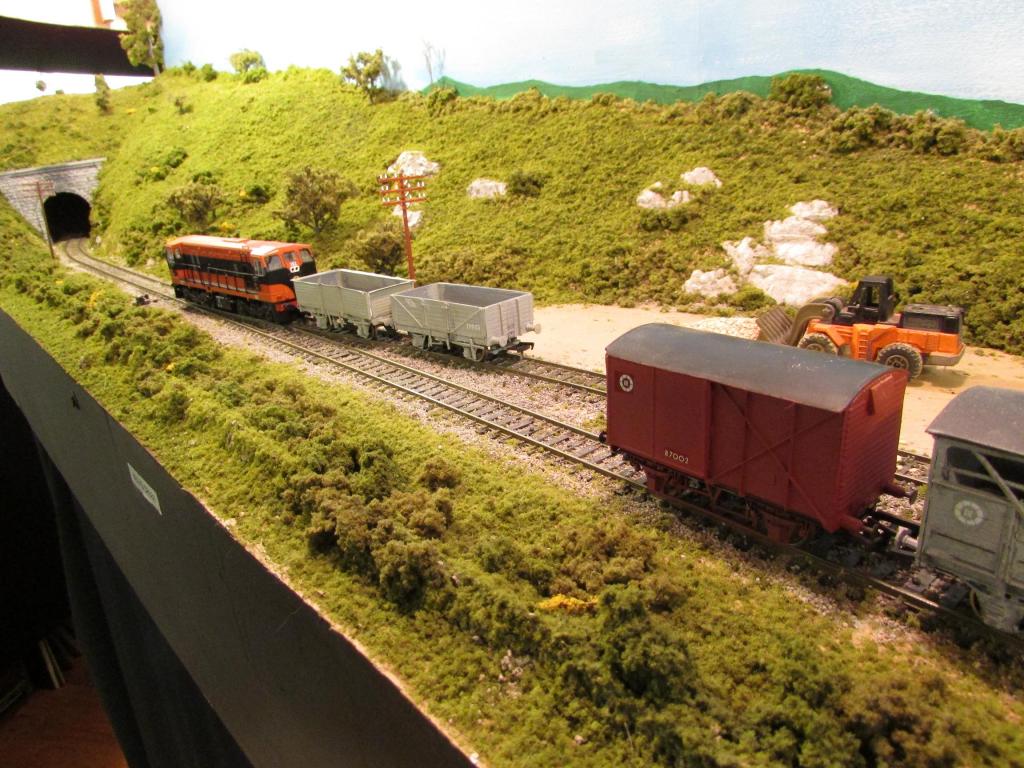-
Posts
904 -
Joined
-
Last visited
-
Days Won
41
Content Type
Profiles
Forums
Events
Gallery
Blogs
Store
Community Map
Everything posted by patrick
-
The first two of twelve Provincial wagons Bulleid opens spotted for beet loading at Keilys Cross. The buffers on the second wagon were replaced by Dart castings heavy cast buffers which were fitted to many by the seventies. They still need to be weathered.
-
I weathered the track on my layout with Woodland Scenics weathering markers after it was tested. The markers come in a 3 pack but as Noel mentioned the rust colour appeared to strong so I used only the rail grime and sleeper grime. I have an airbrush but will do almost anything to avoid using it since I hate cleaning it! Woodland Scenics grey blend ballast was then applied after the ground cover was in place.
-
-
I have been enjoying the ongoing tour of Pettigo over the last few weeks and look forward to more, epically more photos of rolling stock. I am also glad that you raised the topic of layout height. Each consecutive layout I have built has become higher. It sometimes seems modeller are septical about layouts with narrow benchwork which are built closer to eye level and need to see one to be convinced of how effective they are. If in doubt set up a scene on a high shelf with a section of track, a building or two, a improvised backdrop, a few details and some rolling stock to see the effect. Does your layout have a continuous run or a fiddle yard at both ends?
-
The ramp is bassed on one in a photo of Spa station from Rails Through North Kerry. It is made from coffee stirrers which I found in the break room at work. It still needs more painting and weathering to hide the fresh lumber look.
-
-
-
Thanks Glenderg! You made my day.
-
On my last post I mentioned replacing the arms of the Dapol signals with parts from SSM signal kits. While I am sure this could be done after attempting to do one I found the process too fiddly and decided to use the signals as they are rather than risk damaging them beyond repair. The only changes made were to remove the finals and the loop at the top of the ladder. It is a compromise I am willing to accept in order to have reliable working signals. I'm not out of the woods yet though, Dapol don't make bracket signals so I will have to attempt to build SSM kits to control the entrance to the passing loops. The signal cabin in the photo is a kit bashed Dapol kit. It is quick easy and inexpensive and looks the part however is much too large for such a small station. It is planned to replace it with one based on the one at Kilmacthomas.
-
Another suggestion on this thread from John Mayer was to adapt Dapol GWR Round post semaphore signals by removing the finals and replacing the arms with SSM parts. The photos show the signals with the finals removed and some modification to the ladders. At some point the arms and ladders will be replaced.The final result will not be as elegant as well constructed SSM signals but is much more in line with my skills! And they will work!
-
Latest project is a gantry crane inspired by photos from Rails Through North Kerry by John Beaumont and Barry Carse and a comment by John Mayer on this thread a while back suggesting the presence of a Co Op near Glen More which shipped produce by container. Dementions were guesstimated from the few photos I could find online and photos in John and Barrys book. I'm still not sure about the overall demensions, thinking it might be too high but will wait until the lifting mechanism and hook are in place to make a final judgment. Similar cranes were located in Tralee Rathkeale and Navan.
-
In the late seventies as a teenager I was fortunate to have traveled on the North Kerry goods from Tralee to Listowel twice, to Castleisland once and from Tralee to Abbeydorney and Fenit on beet trains several times. The experience of standing on the veranda of a 30 ton brake van watching the long string of open wagons hauled by an A class climbing out of Tralee is one I will never forget as is the cocktail of diesel exhaust axle grease and paraffin oil from the marker lamps and turf smoke from the stove of the brake van in the cold morning air. In the early eighties while living in Limerick I got to travel the Mungret branch and from Silvermines to Foynes on a barytes train.
-
My son Kieran was visiting over Christmas and shot this video which shows the present state of the layout.
-
http://www.hattons.co.uk/63230/Peco_Products_5081Peco_Pallets_assorted_3_types_/StockDetail.aspx?utm_source=ehattons.com&utm_medium=redirect&utm_campaign=ehattonsredirect The pallets are from PECO and really look well.
-
-
Ten H vans are currently under construction and will add hugely to the atmosphere of the layout. Most will be grey with the tan and white CIE roundal {available from Railtek)since most of my palvans and 12 ton ex GN vans are brown. This will keep the brown/grey ratio at about fifty fifty as jhb suggests. When starting the layout the idea was to cover the eras from the late sixties to the mid seventies however I have now decided to concentrate on 1973-1974 during the transition to the then new supertrain colour scheme. The black Metrovicks and railcar will come out occasionally for photos. Hopefully next on the workbench will be Leslie's Bulleid opens which will replace my own much inferior home made versions.
-
The first three Provincial Wagons H Vans have been assembled and painted. I am waiting for Railtek tan roundals with CIE in white to finish them.
-
.thumb.jpg.3c2fadb488e8bf5ef9653331666e86a6.jpg)
CIE A9 Dungarvan to Waterford 1966
patrick replied to Mayner's topic in Photos & Videos of the Prototype
Thanks John, I may now have an excuse to run grain hoppers on my layout! Does anyone know if Flavahins had a private siding and where the grain shipments originated from? -
I picked up some strip wood which seemed about right for making sleepers at a craft shop yesterday and it led to an enjoyable one evening project. The roof is plasticard covered with fine black sandpaper. It still needs a door and probably should have a window, I could not find any photos of Irish platelayers huts online so much of it is based on my own recollections of a similar one which was once in Tralee.
-
I memory serves me well 40 loaded beet wagons was common out of Tralee in the evening during the beet season from Abbeydorney, Ardfert, Spa, Fenit and the North Kerry yard.
-
At 6:05 in this video there is a scene showing an A class entering Athenry from Limerick with a rake of 7 ivory bubbles.
-
.png.c363cdf5c3fb7955cd92a55eb6dbbae0.png)

